The Lottery Ticket and hat pins?
g kinney
Hi experts
In my days of collecting Verne I was told and I observed that US first edition copies of The Lottery Ticket had been stabbed in the spine with a pin. The copy on my shelf has several holes in the spine and I've had two other copies of the same edition with holes. One would think that these were due to insect damage but that's less likely in the spine and the holes terminate in tears in the page that don't look like they were caused by insects. The story I was told was that Verne annoyed some group of people with either that book or in general and the result was that people went to bookstores and deliberately damaged that book in particular.
Is this true? Is this documented somewhere? My Google-fu fails me here so I turn to you!
Thanks!
Greg Kinney
mken...@aol.com
RFOG
--
You received this message because you are subscribed to the Google Groups "Jules Verne Forum" group.
To unsubscribe from this group and stop receiving emails from it, send an email to jules-verne-fo...@googlegroups.com.
To view this discussion on the web visit https://groups.google.com/d/msgid/jules-verne-forum/572a9122-1764-4edb-a64d-3505f6dbcc25n%40googlegroups.com.
pj moe
- did all the UK & US editions print the same text/ the Kendall translation?
[Sampson Low/George Munro/M.A.Donahue etc.]
www.jules-verne.no/english
mken...@aol.com
The Lottery Ticket (1886, London: Sampson Low, trans.?) - reprint: Holicong, PA: Wildside Press, 2003.
“What time is it?” asked Dame Hansen, as she knocked the ashes out of her pipe while the last few whiffs floated off against the painted beams of the ceiling."an...@julesverne.ca
Sent: Thursday, February 25, 2021 2:04:13 PM
To: Jules Verne Forum <jules-ve...@googlegroups.com>
Subject: Re: [JVF] Re: The Lottery Ticket and hat pins?
mken...@aol.com
Jan Rychlik
To view this discussion on the web visit https://groups.google.com/d/msgid/jules-verne-forum/eb35d8c0-78a7-497e-a7de-0539c6e96447n%40googlegroups.com.
pj moe
So, then, is the text in the Donahue edition also the Kendall translation?
g kinney
Thanks!
g
James Keeline
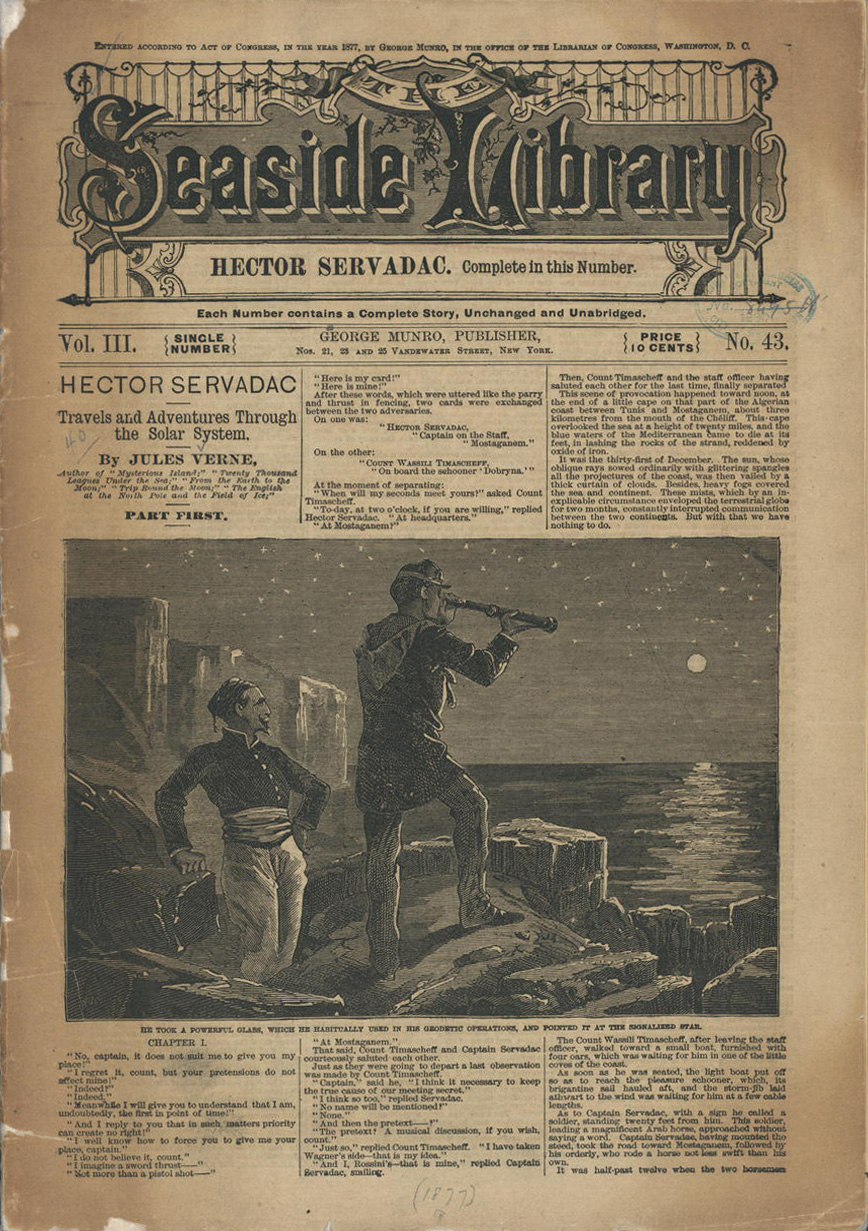
Thanks!
g
Dear forum friendsThanks for these comments regarding editions and translations of 'Le no.9672'- I'd really like to read your translation, Matthias - I do read German :-)- and Jan, we can get back to details regarding the imperfections of the Kendall translation soon, in a new discussion here on the Forum.The initial entry in this Forum string, relates, as I understand, to a hard bound edition?:"US first edition copies of The Lottery Ticket had been stabbed in the spine with a pin"Without seeing it, my guess is: M.A. Donahue, Chicago "Ticket No. 9672- as depicted on Andrew's valuable JV webpages[Andrew Nash: julesverne.ca/vernebooks/jules-verne_lottery-ticket.html].
25. 2. 2021 v 16:55, 'pj moe' via Jules Verne Forum <jules-ve...@googlegroups.com>:
James Keeline
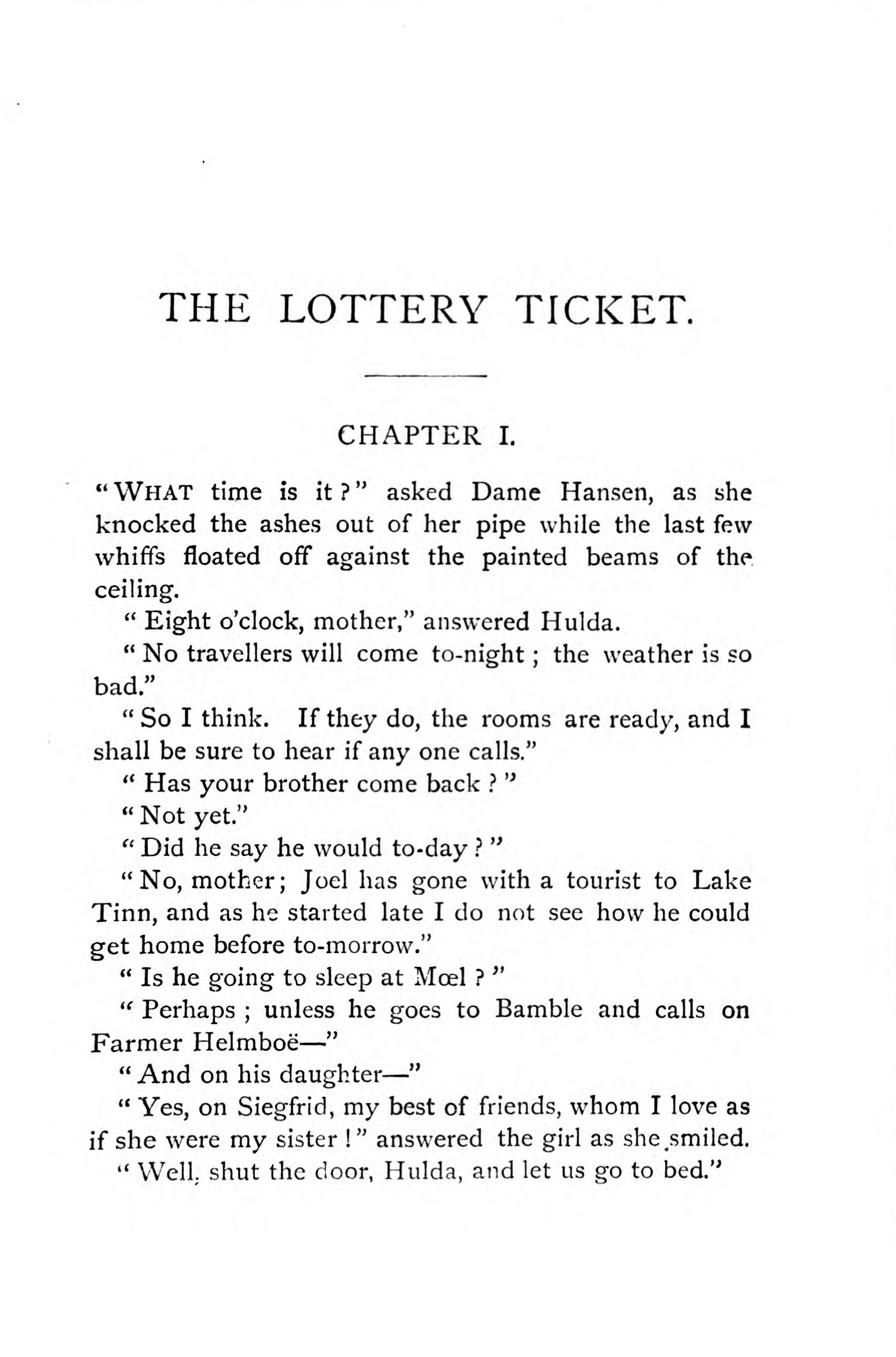
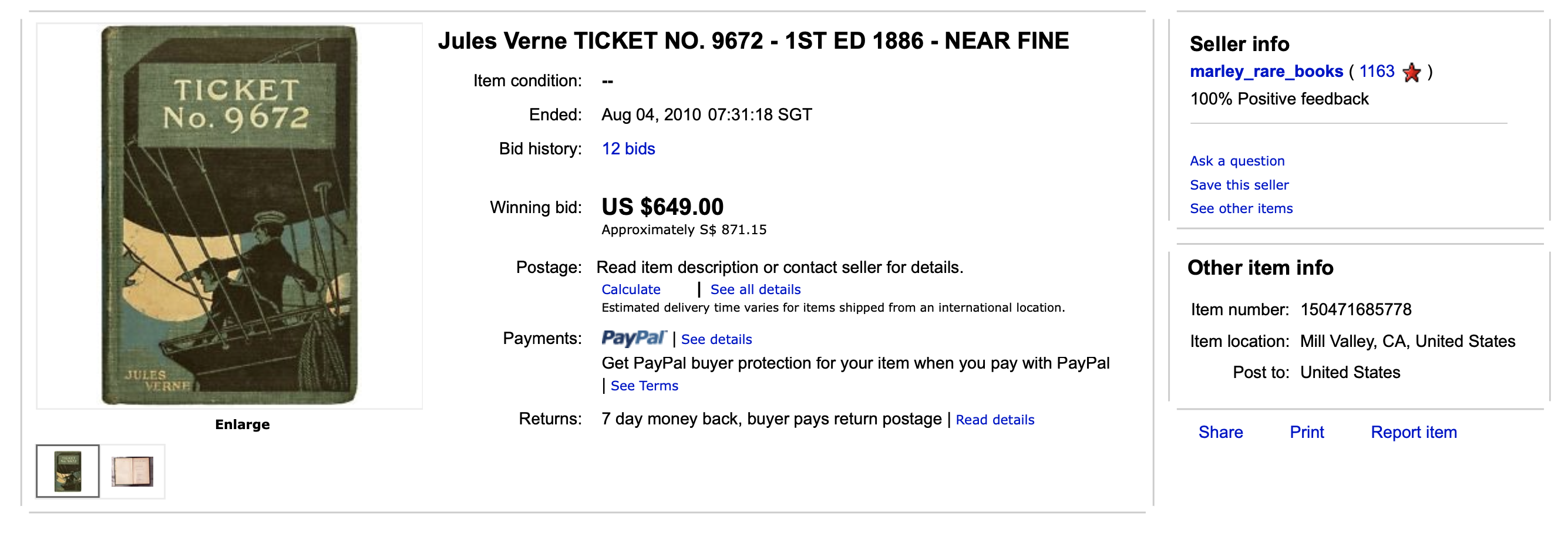
James Keeline
Tom Swift: * Tom Swift Guide to Life * Tom Swift Ked's Book Reprints *
http://www.lulu.com/spotlight/24PalmerStreet
pj moe
Best, Per Johan
www.julesverne.no/english
James Keeline
Tom Swift: * Tom Swift Guide to Life * Tom Swift Ked's Book Reprints *
http://www.lulu.com/spotlight/24PalmerStreet
mken...@aol.com
James Keeline
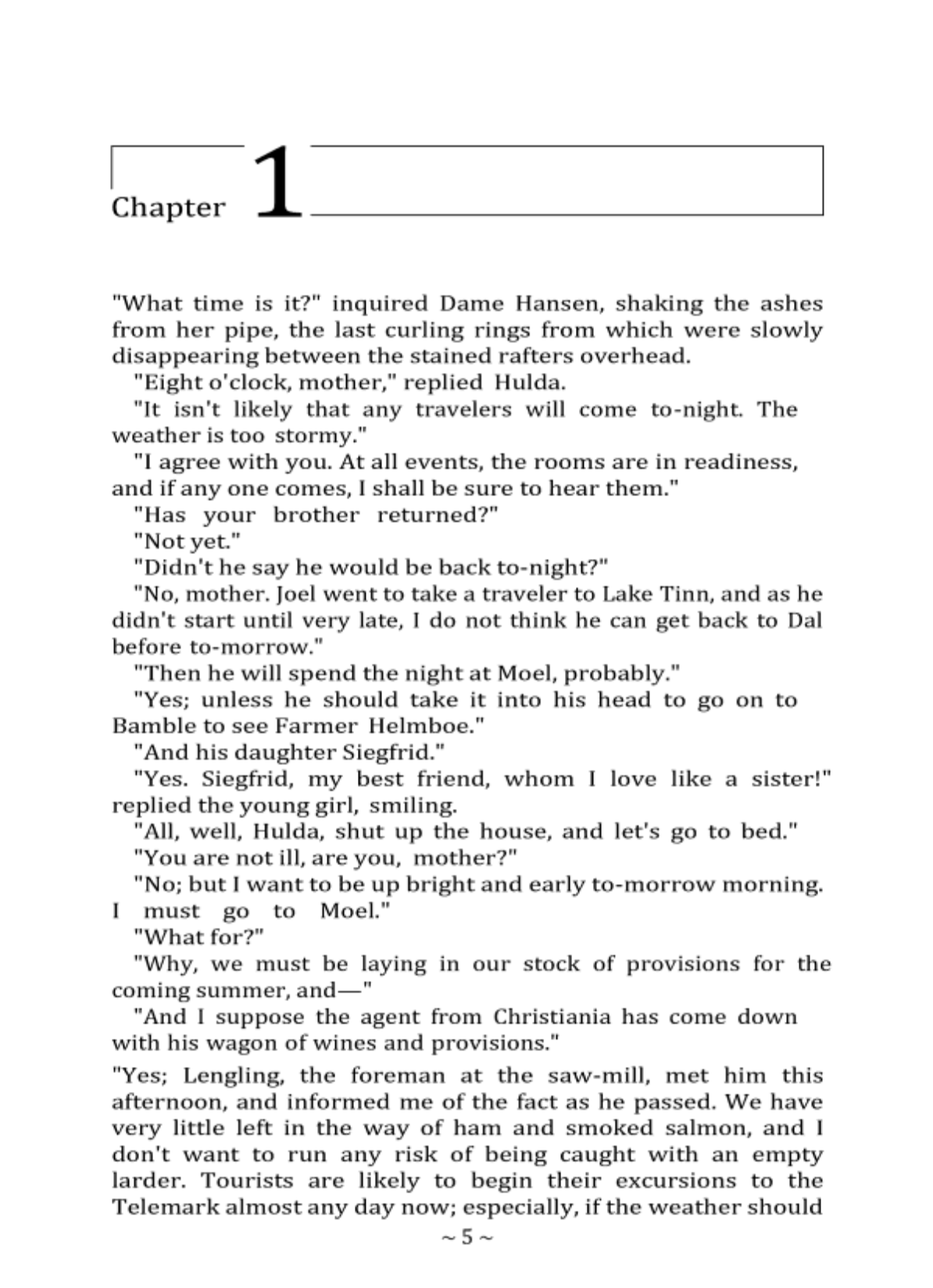
mken...@aol.com
James Keeline
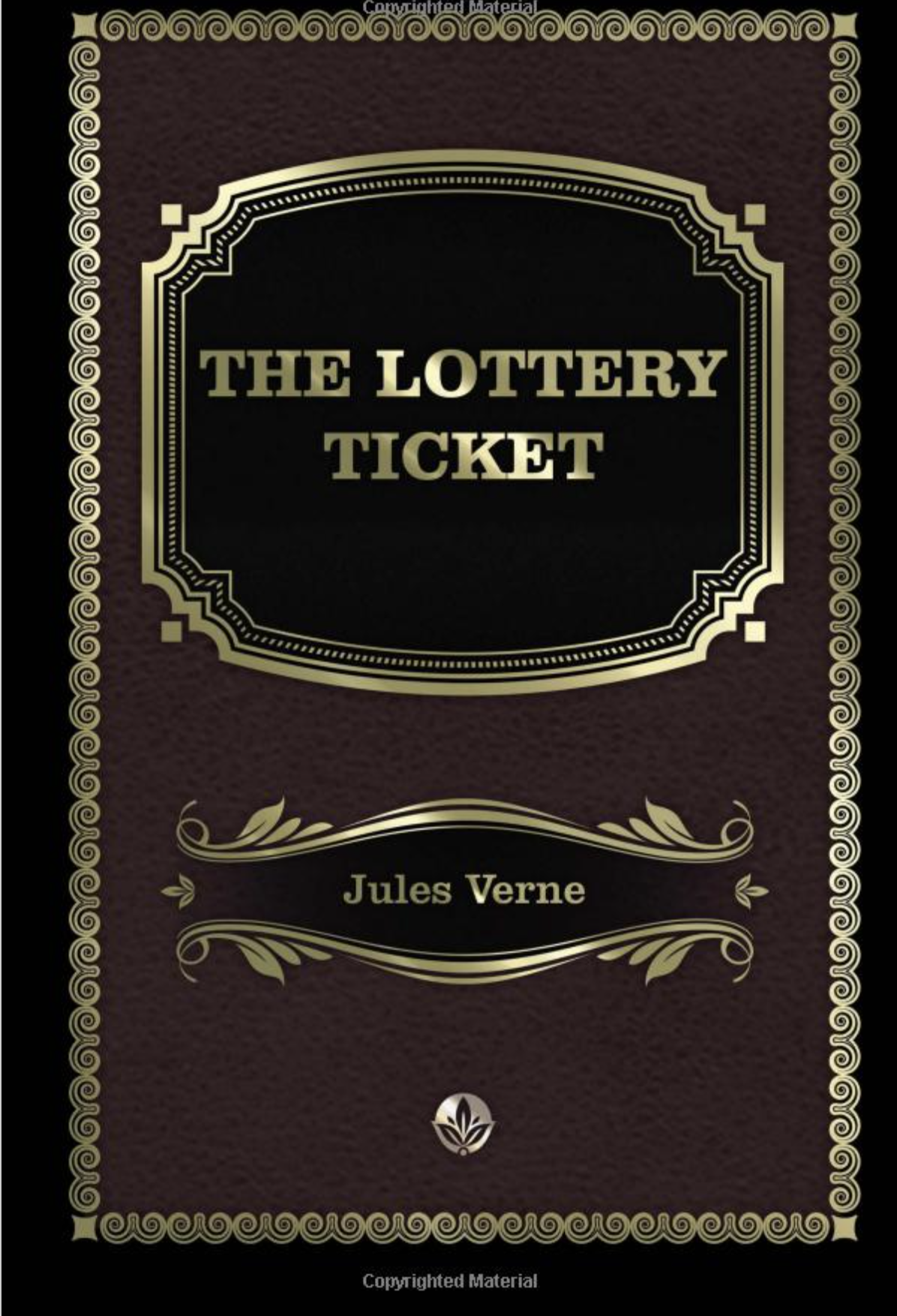


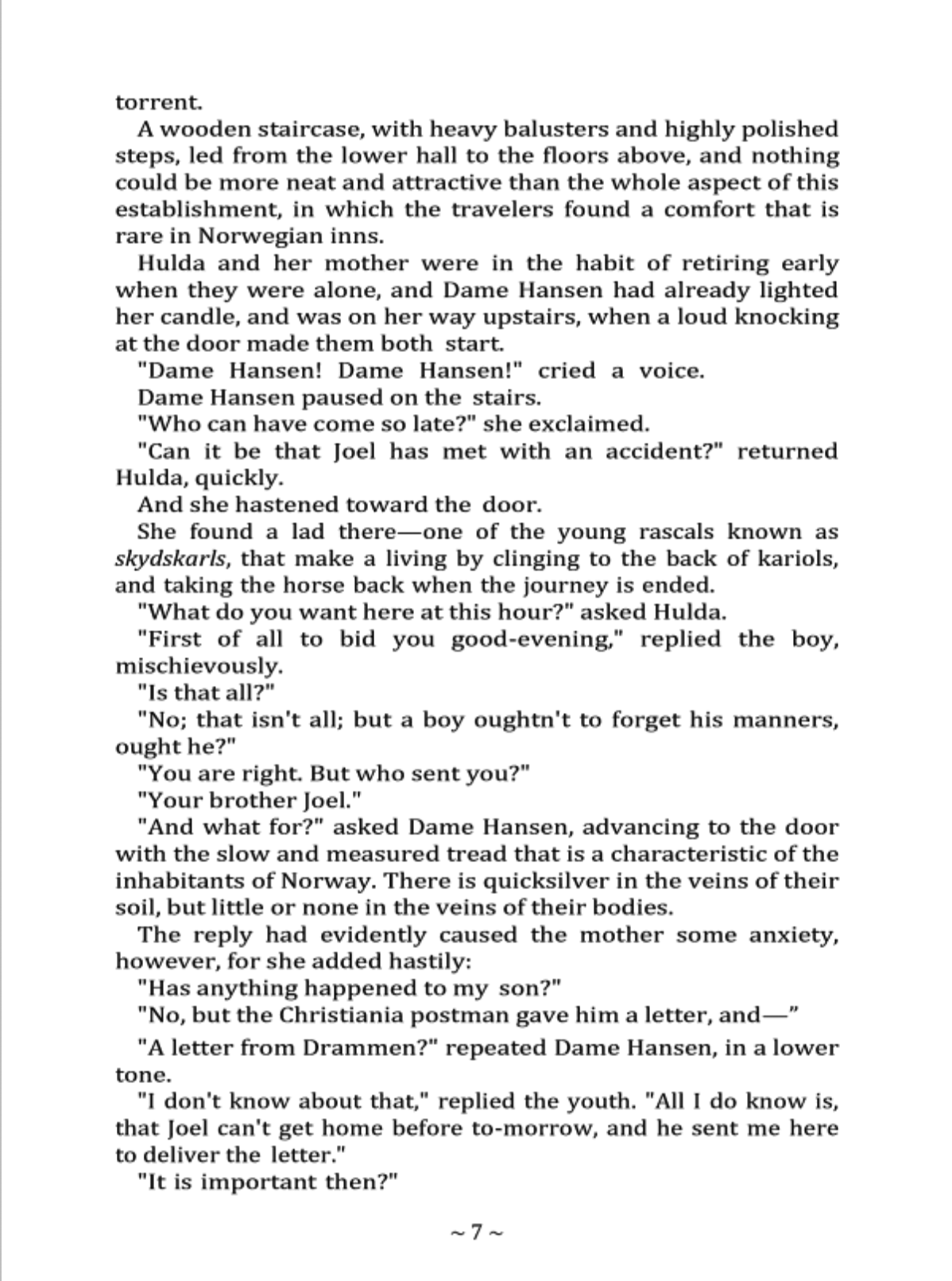
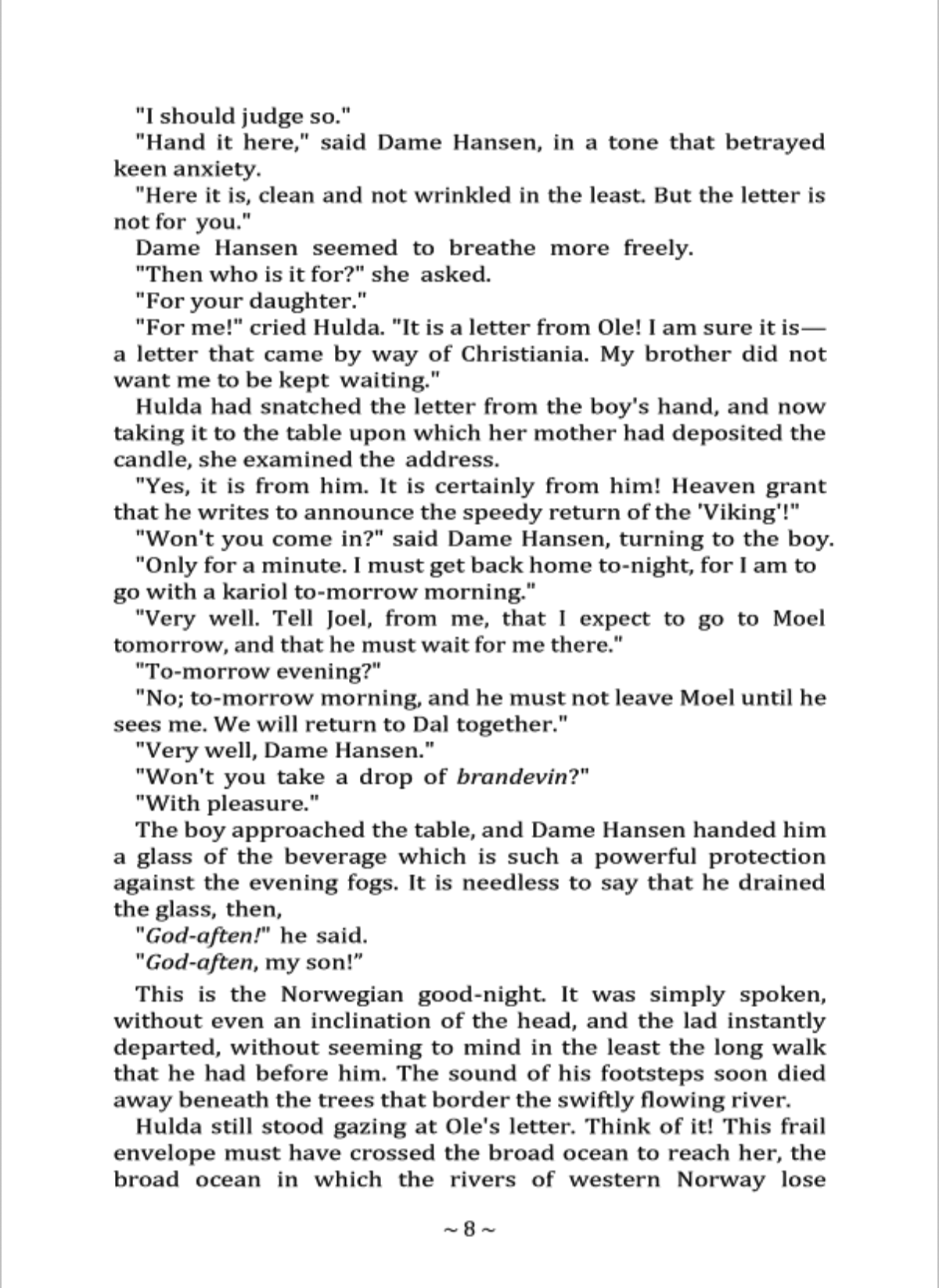


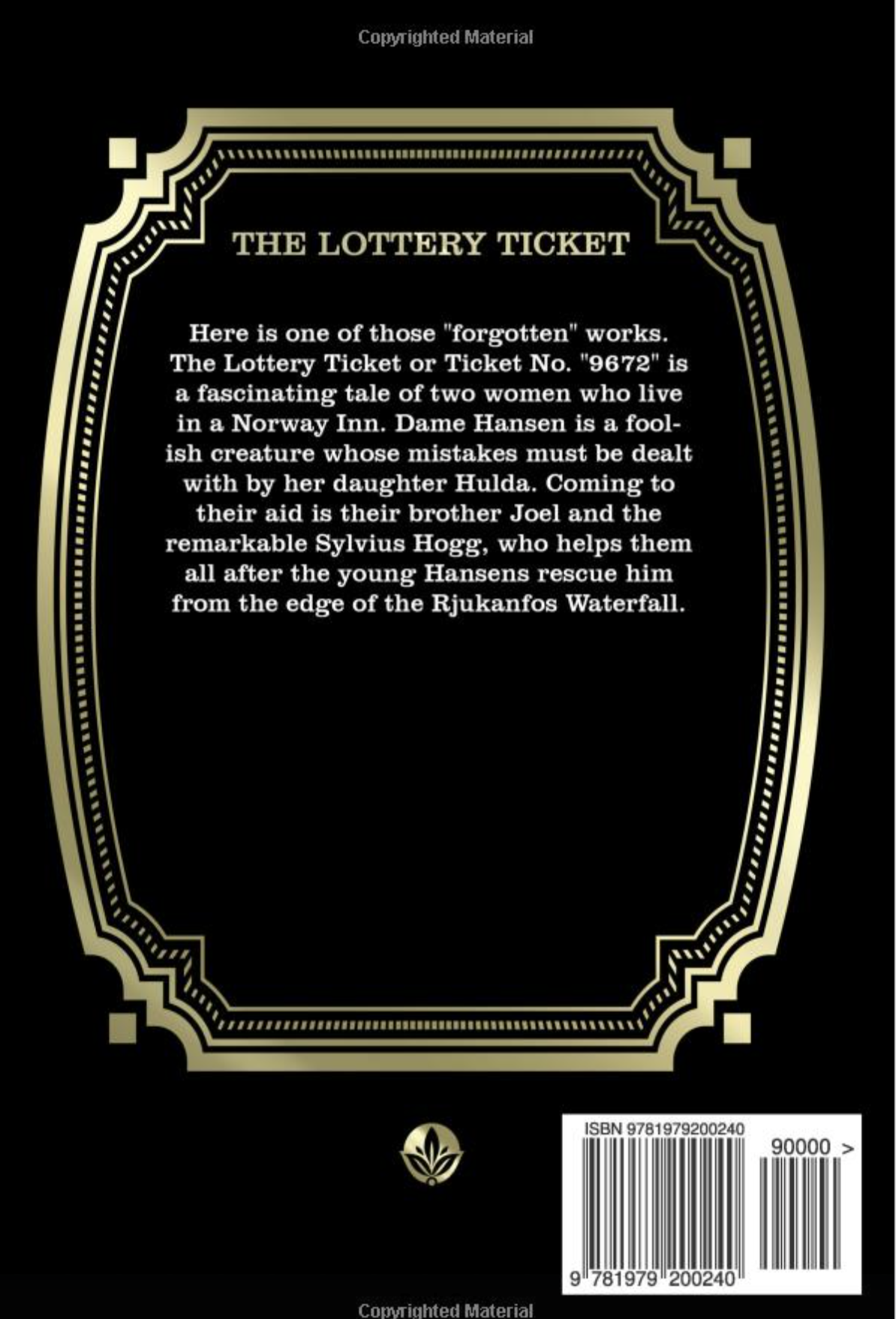
Perhaps you can best determine which translation text this is. The listing attributes it to Laura E. Kendall.
_____
I looked at the Amazon listing for the Wildside Press edition using the "Look Inside" feature.The text page looks like this:
This is retypeset from the original. ("Newly set" also works for this activity.) Wildside Press routinely does this so they can get the best quality printing and offer Kindle and other eBook formats.As near as I can tell, they have used the Sampson Low text and not provided anything new (illustrations, introduction, etc.) that would entitle them to a new copyright for the new content. It does not seem to be a new translation but I have not made a comprehensive comparison.Of course if Google Books was to have a copy of the book, they would still block the newly typeset version because a publisher like this slaps a new date (perhaps even calling it a copyright) on it. In some cases, scans of vintage books are blocked and available only in snippet view because of the existence of modern reprints. This is wrong but it is impossible to convince Google otherwise without a lawsuit. In this case, the HathiTrust copy is still available but that is not always true.I notice a very low price on the paperback edition of the Wildside Press book at the moment.Wildside Press is a small publisher. They do some original content such as the anthology for Bouchercon (mystery convention) and a lot of reprints. For some of them I think they contact the rights holders. For others I am not so sure that they do. They recently offered a 1930 (in copyright) text of the first Nancy Drew book and it is unlikely that the copyright holder (Simon & Schuster) has granted them permission for this. So, I don't know how thorough they are in securing rights for everything they publish that is not in the public domain. The Sampson Low Verne Translation is public domain so they can do what they want with it, except claim a fresh copyright for an old public domain work.James D. Keeline
mken...@aol.com
James Keeline
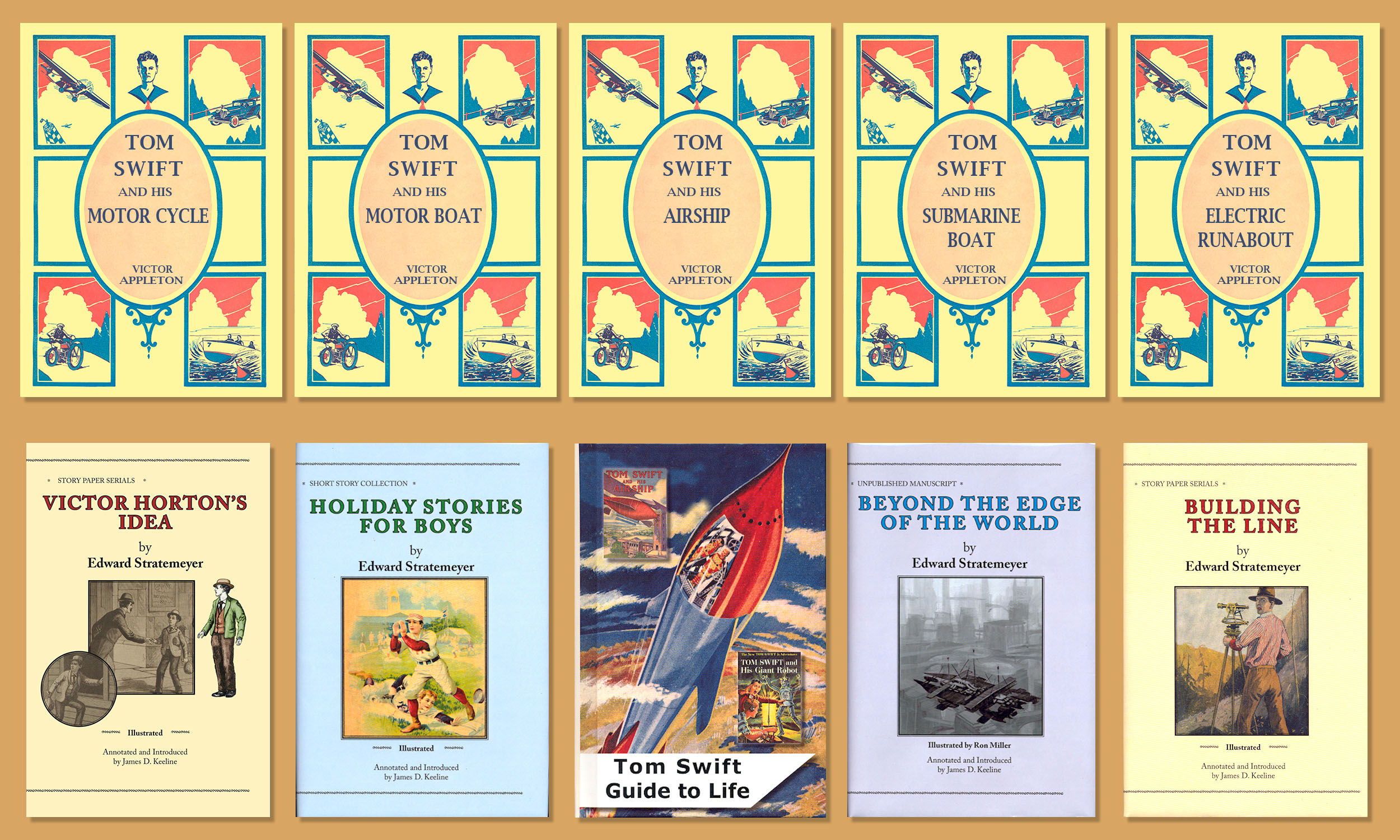
mken...@aol.com

